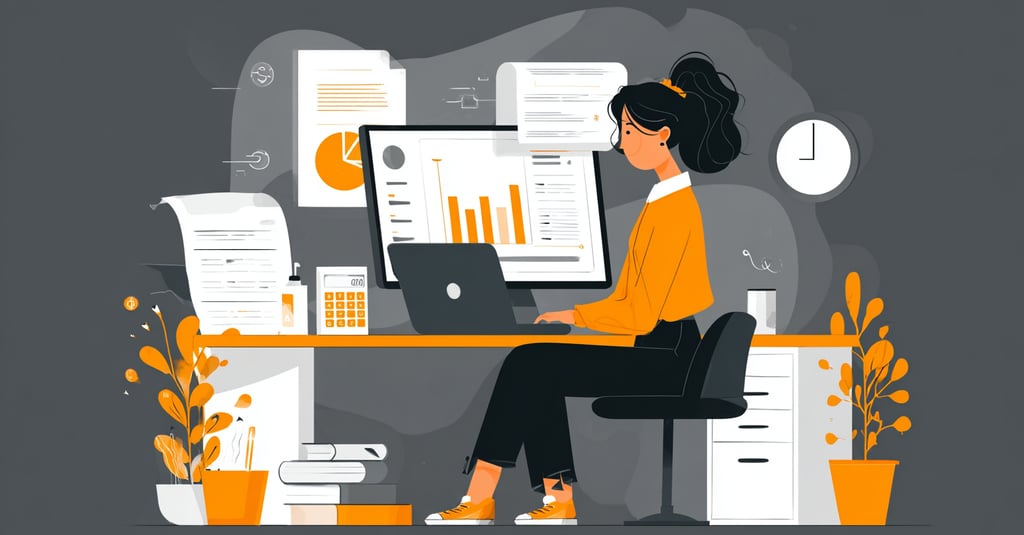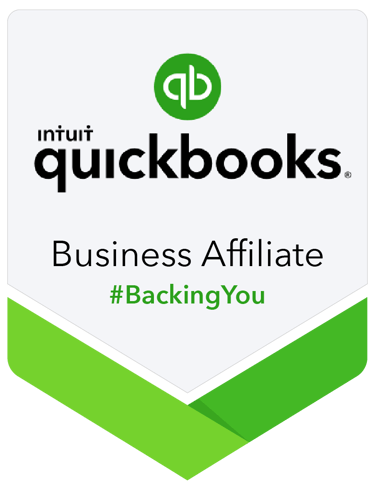Best Bookkeeping Software for Small Business - Automation Features Guide 2025
Discover the essential bookkeeping software features every small business needs. Learn about bank feeds, auto-categorization, and when automation helps vs. hurts your books.
REPORTINGAUTOMATION
Jerry Blanco
7/8/20254 min read


Stop Drowning in Receipts—Let Technology Handle the Heavy Lifting (While You Stay in Control)
Picture this: It's 11 PM, you're surrounded by crumpled receipts, and you're trying to figure out whether that $47 charge was for office supplies or that client lunch three weeks ago. Sound familiar?
If you're nodding your head, you're not alone. Most small business owners I work with start their bookkeeping journey drowning in paperwork, spending precious hours on tasks that modern software can handle automatically. But here's the thing—not all automation is created equal, and knowing when to let the software take the wheel (and when to grab it back) can make or break your financial records.
Let's walk through how to choose bookkeeping software that actually makes your life easier, not more complicated.
Why Your Current System Probably Isn't Working
Before we dive into solutions, let's talk about what's likely driving you crazy right now. Most small business owners start with one of these approaches:
The Shoebox Method: Throwing all receipts in a box and dealing with them "later" (spoiler alert: later becomes tax season panic)
The Spreadsheet Struggle: Manually entering every transaction into Excel, which works until you have 500+ transactions and can't find that one mysterious charge
The Banking Statement Shuffle: Trying to do everything from your bank statements, missing cash transactions and losing track of what expenses are actually deductible
Sound familiar? The good news is that modern bookkeeping software can eliminate about 80% of this manual work—if you choose the right features.
The Game-Changing Features You Need to Know About
Bank Feeds: Your New Best Friend
Think of bank feeds as having a direct pipeline from your bank account to your bookkeeping software. Instead of manually typing in every transaction, your software automatically pulls in all your bank and credit card transactions.
Here's what this looks like in practice:
Every morning, your software has already imported yesterday's transactions
That $47 charge I mentioned? It's already there, waiting for you to categorize it
No more missing transactions or typos from manual entry
Action Step: When evaluating software, ask: "Does this connect to my specific bank?" Not all software works with every bank, and some charge extra fees for this feature.
Recurring Transactions: Set It and Forget It
If you pay the same amount for rent, insurance, or software subscriptions every month, why type it in repeatedly? Recurring transaction features let you set up these payments once, and the software automatically creates the entry each month.
Real-world example: Sarah runs a home-based consulting business. She set up recurring entries for:
$800 monthly rent (allocated to home office expense)
$49 monthly software subscription
$150 monthly business phone bill
Now these three transactions happen automatically, saving her 15 minutes each month and eliminating the chance she'll forget to record them.
Action Step: Make a list of your monthly recurring expenses before shopping for software. Look for systems that let you set up at least 10-15 recurring transactions.
Auto-Categorization: The Double-Edged Sword
This is where things get interesting. Auto-categorization uses artificial intelligence to guess where your transactions should be categorized. Buy something at Office Depot? The software assumes it's office supplies. Grab lunch at a restaurant? It might categorize it as meals and entertainment.
When auto-categorization is amazing:
Routine purchases from the same vendors
Clear-cut transactions (gas station = vehicle expenses)
High-volume businesses where manual categorization would take hours
When auto-categorization can hurt you:
That Office Depot purchase was actually a gift for a client (should be client entertainment, not office supplies)
The restaurant meal was a working lunch with a potential client (deductible) vs. lunch alone (not deductible)
You bought office supplies for personal use (not a business expense)
Action Step: Look for software that learns from your corrections. If you change how it categorizes Starbucks purchases from "meals" to "client entertainment," it should remember that preference.
When Automation Becomes Risky: The Red Flags
Here's what 20+ years of experience has taught me: automation is fantastic until it's not. Here are the warning signs that your software is doing more harm than good:
Red Flag #1: The Software Never Asks Questions
If your software automatically categorizes 100% of transactions without ever flagging unusual ones, it's probably making mistakes. Good software should ask for clarification on:
Large or unusual transactions
New vendors it hasn't seen before
Transactions that could fit multiple categories
Red Flag #2: You Can't Easily Override Decisions
Sometimes the software will be wrong. If changing a category requires clicking through five screens or doesn't "stick" for future transactions, find different software.
Red Flag #3: No Audit Trail
You should always be able to see what the software changed and when. If transactions mysteriously move between categories without explanation, that's a major problem.
Choosing Software That Grows With You
Whether you're a solo freelancer or managing a growing team, here's what to look for:
For Sole Proprietors and New Freelancers:
Essential features:
Bank feed connectivity to your primary accounts
Basic auto-categorization with easy override options
Recurring transaction setup
Simple expense tracking by category
Nice-to-have features:
Receipt photo capture via mobile app
Mileage tracking
Basic invoicing
For Small Teams (2-5 people):
Everything above, plus:
Multiple user access with permission controls
Payroll integration or easy export to payroll services
More sophisticated reporting
Inventory tracking (if applicable)
For Growing Startups (up to 10 employees):
Everything above, plus:
Advanced reporting and analytics
Integration with other business software
Customizable chart of accounts
Audit trail and backup features
Making the Decision: Your Step-by-Step Action Plan
Start with a trial period (most software offers 30-day free trials)
Connect your bank accounts and let the software import one month of transactions
Test the auto-categorization on familiar transactions
Set up 3-5 recurring transactions you know you'll have monthly
Try to generate a basic profit & loss report
Evaluate the learning curve—if you're still confused after a week, it might not be the right fit
The Bottom Line: Automation Should Simplify, Not Complicate
The right bookkeeping software should make you feel more in control of your finances, not less. It should save you time on routine tasks while still letting you make the important decisions about how your transactions are categorized and recorded.
Remember: The goal isn't to eliminate all human involvement—it's to eliminate the tedious, time-consuming parts so you can focus on growing your business and making smart financial decisions.
Your books are too important to run on autopilot, but they're also too time-consuming to do entirely by hand. The sweet spot is smart automation with human oversight, and the right software will make that balance feel natural.
Still feeling overwhelmed? Schedule a free 15-minute consultation to discuss your specific bookkeeping needs.


